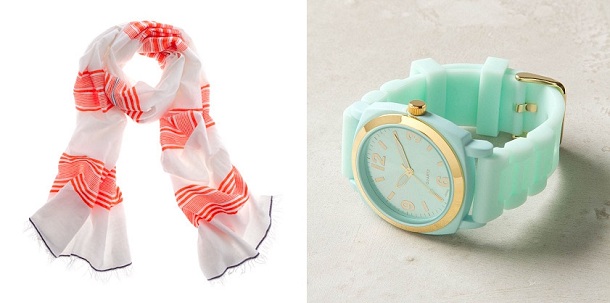I've always loved the look of Sunprint images and I had a bunch of scrap paper lying around the house so I thought I'd make a recycled paper notepad with a Sunprint image for the cover. It turned out so well, I had to make another one.
Making your own notepads from leftover paper or old notebooks that are sitting in a closet is really simple and fun. Here's the method I used and the books are holding up nicely.
Supplies:
Scrap paper
Mod Podge (I hear you can use plain Elmer's glue, but I haven't tried it)
Any cheap-o paint brush
Exacto knife, ruler and self-healing cutting mat (or a large paper cutter)
Binder clips
Adhesive spray (available at craft stores; for an example click
here)
Thick craft paper for the back of your pad (you actually don't need this, but I like it because it makes the pad feel a bit more durable once assembled)
Sunprint for the cover (you can really use anything for the cover--cool wrapping paper, a printed photo, plain construction paper, etc.)
Single-faced corrugated cardboard wrap for the spine (or any sort of decorative/masking tape--or a plain piece of paper)
Step 1: Cut your scrap paper to whatever size notebook you want. Set aside one piece that you'll use when you add your Sunprint cover page. Step 2: Take the thick craft paper and cut one piece so it's the same size as your scrap paper.

Step 3: Gather it all together with the craft paper on the bottom and tap it down on a table so all the pieces of paper are flush on the sides--especially the spine (the side you're gluing together). Step 4: Use binder clips to hold the paper together so you can glue it without the pages moving around. Step 5: Use your cheap little paint brush to apply the Mod Podge. I like
to tap the glue along the spine so that it really gets into any pieces
that may not be perfectly flush; then I immediately do a second
layer--this time brushing the glue evenly over the top so it's smooth.
Let the glue dry for 15 minutes, then apply another layer. Technically I
don't think you need it, but I like to err on the side of caution, so I paint on a third layer after another 15 minutes. Place a third binder clip in the middle of the spine after each layer to really keep the pages together while the glue dries.

Step 6: Either cut whatever you're using for a cover to the same size as your notepad paper, or make a Sunprint. Making the Sunprint is easy and looks really cool. I got my Sunprint kit from the Getty museum here in LA, but I know they sell them at hobby stores and on
Amazon for $15. The directions on the kit are all you need and they're simple and to-the-point.
Step 7: I cut my Sunprint paper to the same size as my notepad paper first, then I design the print. Be creative here! You can use flowers, leaves, small items like a skeleton key or buttons and even photo negatives. Arrange them on the paper however you like and then cover it with the included acrylic board. I used fern leaves to create my initial "A" on one book and a rosemary sprig and needles to spell "NOTES" on the other. Take it outside and place it in direct sunlight for 1 to 5 minutes and you'll watch the blue paper turn to almost-white.


Step 8: Submerge it in water for a few minutes and then lay it flat or hang it to dry. I also like to press it once it's dry to really flatten it out. I use my old massive dictionary and stick the print in the middle overnight.
Step 9: Cut the corrugated cardboard to the proper height and width. I cut mine so that about 1" would show on the front and back. FYI: you want the single-faced cardboard--not double-faced--so that you can bend it. Click
here for an example from Paper Mart.

Step 10: Now take the dry, pressed Sunprint and use adhesive spray (don't use
regular glue--it'll warp and be bubbly!) to glue it to the spare piece
of notepad paper you set aside earlier. (The only reason for doing this
is that the Sunprint paper is pretty thin and flimsy, so adding an
additional piece of paper makes it more durable. You can skip this step
if what you're using for a cover is already thick or if you just don't care about the thickness.) Step 11: Glue your cover to
the front page of your notepad with a thin line of Mod Podge just next
to the spine. Cover the underside of your corrugated cardboard strip with Mod Podge and press it onto the spine, then press it over the sides to adhere it to the front and back. If any of the glue seeps out, just use a paper towel to wipe it away immediately. Use the same method for a piece of paper. And if you're using tape, just stick it on.


Voila! A pretty notepad to keep next to the phone or at your bedside to jot down random thoughts, dreams, etc.


















































